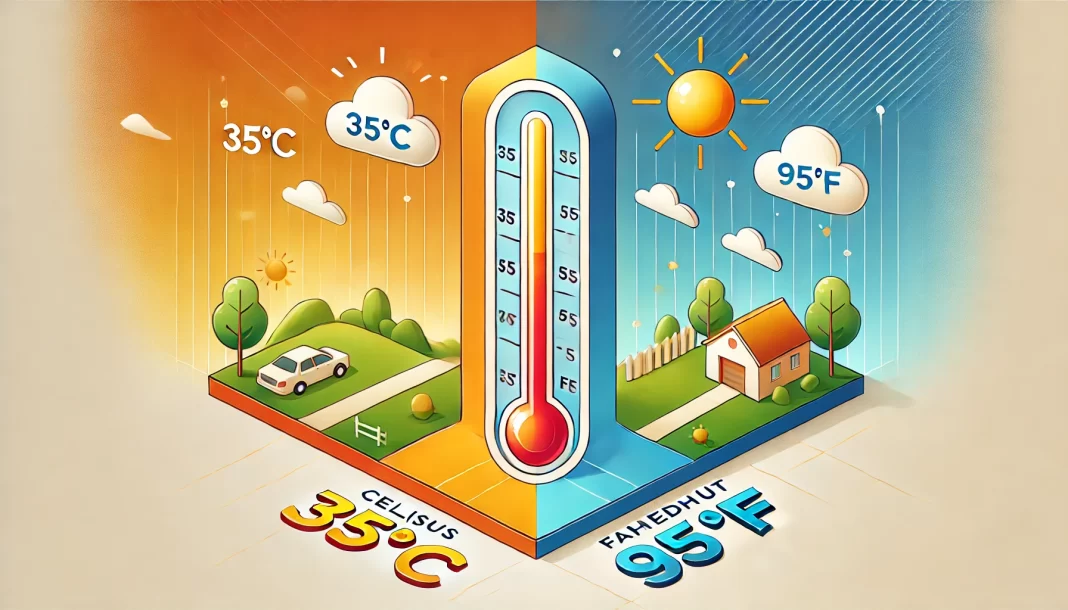Understanding temperature conversions can be confusing, but it’s an essential skill in a world where Celsius and Fahrenheit scales are widely used. If you’ve ever wondered how to convert 35 Celsius to Fahrenheit, you’re in the right place. In this blog post, I’ll break it down step by step, explain why this conversion matters, and even give you a handy formula you can use for future calculations. Let’s dive in.
Why Do We Use Celsius and Fahrenheit?
Before we get to the actual math, let’s explore why these two temperature scales exist.
Celsius (°C) is used in most parts of the world, especially in countries outside the United States. It’s based on the freezing and boiling points of water, with 0°C marking freezing and 100°C marking boiling. It’s straightforward and practical for everyday use.
Fahrenheit (°F), on the other hand, is primarily used in the United States and a few other countries. Its scale is less intuitive, but it’s deeply embedded in American culture, weather reports, and even baking recipes.
So if you’re traveling between regions that use different scales, or just trying to follow a recipe, knowing how to convert between Celsius and Fahrenheit is super handy.
The Formula for Converting Celsius to Fahrenheit
The formula to convert Celsius to Fahrenheit is simple:
F = (C × 9/5) + 32
Here’s what each part of the formula means:
Multiply the Celsius temperature by 9/5 (or 1.8).
Add 32 to the result.
This gives you the equivalent temperature in Fahrenheit. Let’s put this formula to work.
Step-by-Step: Converting 35 Celsius to Fahrenheit
Let’s solve it together:
1. Start with the formula:
2. Plug in the value of 35°C:
3. Simplify the multiplication (35 × 9/5 = 63):
4. Add 32 to 63:
So, 35°C equals 95°F.
What Does 35°C Feel Like?
Understanding the number is one thing, but what does 35°C (or 95°F) actually feel like? Temperatures around 35°C are considered hot in most climates. It’s the kind of weather where you’ll want to stay hydrated, avoid direct sunlight, and probably seek the comfort of air conditioning. For context:
In Celsius: 35°C is a typical summer afternoon in many tropical countries.
In Fahrenheit: 95°F is a scorching day in places like Arizona or Texas.
Why You Should Know This Conversion
If you live in a country that uses Fahrenheit and travel to one that uses Celsius, understanding this conversion can help you:
Dress appropriately for the weather. You won’t pack a sweater for 35°C weather once you know it’s hot.
Cook with confidence. Many international recipes use Celsius for oven temperatures.
Interpret weather forecasts. Knowing whether a temperature means a mild day or a heatwave is essential for planning activities.
A Quick Trick for Estimation
If you don’t have a calculator handy, here’s a rough way to estimate the conversion:
1. Multiply the Celsius temperature by 2.
2. Add 30 to the result.
This method isn’t perfect, but it gives you a ballpark figure. For 35°C:
Multiply 35 by 2 = 70.
Add 30 = 100°F (a little higher than the exact 95°F but close enough for quick estimations).
Common Misconceptions About Celsius and Fahrenheit
1. “Fahrenheit is harder to understand.”
While the Celsius scale is simpler, Fahrenheit offers more precision for everyday temperatures. For example, 72°F feels much more specific than 22°C when describing room temperature.
2. “They’re interchangeable.”
Not quite. Each scale is tailored to different systems, and blindly substituting one for the other can lead to major misunderstandings (like baking disasters!).
Conclusion: Mastering the Basics
Now you know that 35 Celsius equals 95 Fahrenheit and how to do the conversion yourself. Whether you’re planning a trip, cooking, or just brushing up on basic math, this skill will serve you well.
Remember the formula, practice it a few times, and you’ll never be caught off guard when someone mentions a temperature in Celsius. And if you ever forget, just come back to this blog for a refresher!
Got more questions about temperature conversions? Drop them in the comments below. Let’s keep learning together.



